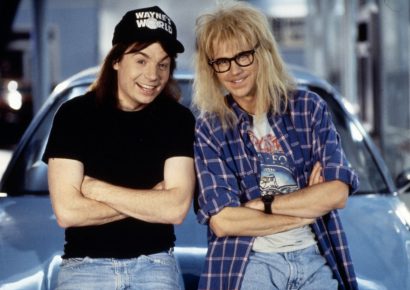What’s the point?
First of all, you should figure out what you want to say. An effective way to do this is by jotting down who, what, why, where and when. Who are you? What have you done? Where are you from / where are you going? When is it happening? Why would it appeal to anyone?
You want to establish the purpose of the document as soon as possible. For instance, begin the spiel with a sentence like “On August 25, UK rock duo Royal Blood will release their self-titled debut album.” This explains a lot in an easily digestible way. The remainder of the release can then elaborate on these key points.
See here for a perfect example by Riot House Publicity
Momentum
Crucially, you want your press release to be easy to read, which means it’ll require forward momentum. Here, conveying a sense of context helps. Where are you at, what preceded this, what’s happened since the last release or tour? Now, don’t get bogged down in a static recount of events. Instead, think of the narrative details that make this band or particular release unique. What circumstances brought you together? What are you individual backgrounds? What curious instances led to this song/ album/ video?
Don’t be afraid to throw in a bit of humour either, as seen here by Death Proof PR.
Keep It Simple
Generally speaking, it’s best to leave the colourful and cryptic language to the reviewers. Describing what music sounds like can be a pain, and if done ineffectively, it’ll seem a bit daft. It’s a lot easier when you don’t take the task too seriously. Leave out statements like “A thrilling use of the E chord” or “a cataclysmic chorus hook”, unless there’s absolutely no better way to say it. Think conversationally; what would you say to recommend this to someone?
Likewise, avoid ambiguity and half-statements; instead of “colourful bass playing” and “leaning towards pop, with a slight dose of rock”, try “melodic bass playing” and “pairing pop melodies with rock guitars”. Exaggeration isn’t necessary, so be careful with expressions like ‘the greatest’, ‘heaviest’ or ‘the pinnacle of collective creativity’. Say it aloud, if it sounds wanky or opaque, leave it out.
Compare
Apparently comparisons are a sign of lazy writing, but this isn’t an academic précis, so there’s no harm in naming the artists you resemble or are influenced by. Ask friends or family members what they think you sound like. That’ll let you come up with a pretty interesting crop of bands. Again, keep it simple; unfathomable hybrids, like “The Beatles crossed with Meshuggah” are always off-putting. Try to weave in comparisons without sounding boastful; e.g. “Prince-like falsetto,” “drum programming that recalls The Postal Service.”
See here for an idea of how to do this unconventionally, written by PR gurus Future Popes.
Quotes
A quote or two from the band members helps to reduce the abstract, marketing-like nature of the document. Quotes are also a handy way to conclude press releases, as they’ll prevent you from having to use ugly “Make sure you listen to this now” advertisement slogans. Also, if you’ve got press reviews, chuck a couple of quotes in at the end after the main body of text. Though, make sure they’re at least a little bit relevant.
See this Mushroom Music Promotions album bio is a shrewd demonstration of how to use quotes.
Details. Links
It goes without saying that your band’s online access points and any pertinent release or tour dates should be included at the bottom of the page (see example below). Include a photo, usually at the beginning (hi-res JPEG 300DPI if submitting for print), as well as a video or music stream at the end. Voila, you’re done.
Tour date listing example:
Month – Date – Venue – City – State – w/ Supports (optional)
May 20 – The Tote, Melbourne VIC w/ supports The Harlots, My Disco.
For more helpful tips on getting your band organised, up to speed and on track visit our COLUMNS section.







